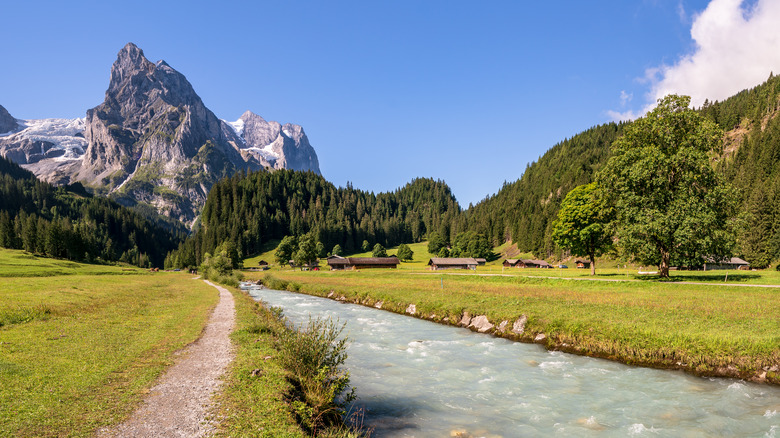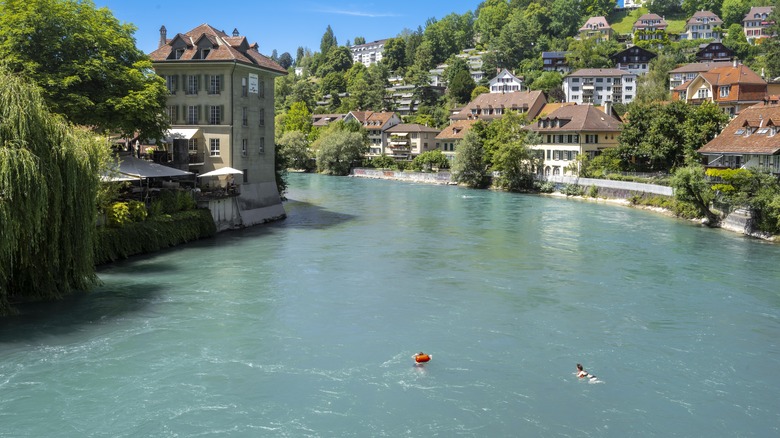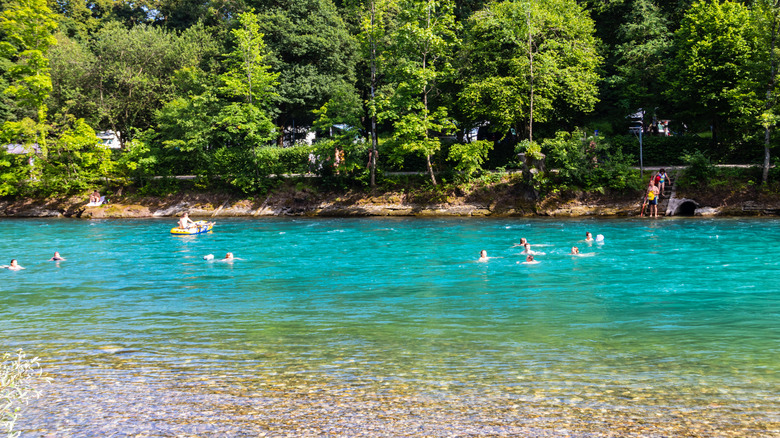After A Heroic Clean-Up, This Landlocked Country Has Europe's Cleanest Sparkling Rivers To Swim And Tube
Think of Switzerland, and images spring to mind of shining cities and efficient transportation networks, crystal-clear mountain lakes, and fairy-tale villages hidden in the Alps. Known as the playground of Europe, Switzerland is also the land of rugged, snow-capped mountains, world-class timepieces, intoxicating chocolates, and hole-adorned cheeses. Switzerland is majestic, safe, and one of the cleanest countries in the world. The last things you'd expect to see there, then, are dirty, murky, muddy, polluted rivers and lakes. Yet, until recently, that's what you may have found when coming upon one of the country's many bodies of water.
Prior to the 1960s, Switzerland had some of the dirtiest rivers in Europe, with raw sewage and wastewater from industrial plants being dumped directly into its waterways. Back in 1965, wastewater treatment plants served only 14% of Swiss residents. Today, that number is closer to 98%, with 37 plants now operating across the country. The result? Rivers and lakes so clean they're sometimes called "blue gold."
These days, a swim in a Swiss river or lake is the perfect complement to a summer trip to the fabled European country. And no matter where you plan to go in Switzerland, you're sure to come across a body of water: the country has more than 1,500 lakes and almost 38,000 miles of rivers and streams.
Epic adventures abound along Swiss rivers
One of the most popular bodies of water in Switzerland for sports like swimming and tubing is the Aare River, the country's longest river, which begins in the eastern Alps and eventually flows into the Rhine. A 2024 Tripadvisor Traveler's Choice Award winner, Aareböötle's experience of floating down this river between the towns of Uttigen and Bern is a dream come true for water lovers.
To embark on this aqueous adventure, pack light and take the train to the Uttigen Train Station, where the outfitter Aareböötle is located. The company will provide you everything you'll need: tubes (or other means of floating, such as kayaks, paddleboards, or inflatable boats), life jackets, and protective bags to keep your items safe and dry. The trip is approximately 12 miles to Bern, Switzerland's iconic capital city, and it takes around 3 hours depending on how many stops you make to swim, lounge, or have a picnic. Prices vary depending on which mode of floating you choose. At the time of this writing, a tubing package was priced at around $75 per person. For another memorable experience along the Aare River, head to a section of the river with a majestic gorge with an easy boardwalk for accessible viewing.
Some tips for dealing with cold water
Note that while air temperatures in Switzerland can vary by region, altitude, and season, water temperatures tend to be relatively cool year-round, with most water bodies peaking at just 68°F during the height of summer. Rivers and lakes higher up in the mountains can be considerably colder, so those planning to spend substantial time fully immersed in the water or who are particularly sensitive (like children or older adults) should wear a swim cap and have neoprene footwear, gloves, and a wetsuit on hand as forms of insulation against the cold water. To avoid cold shock and to give your body time to acclimate, enter the water slowly and avoid sudden, full-body immersion. Additionally, it's important to always swim with a group or partner and monitor your time spent in the water to limit the risks associated with hypothermia.
Be safe, but above all, savor your experience of the beautiful, sparkling Swiss water! Besides rivers, definitely also check out some of the country's brilliant blue lakes, such as Lake Lucerne, home to little-known lakeside towns like Sisikon.


